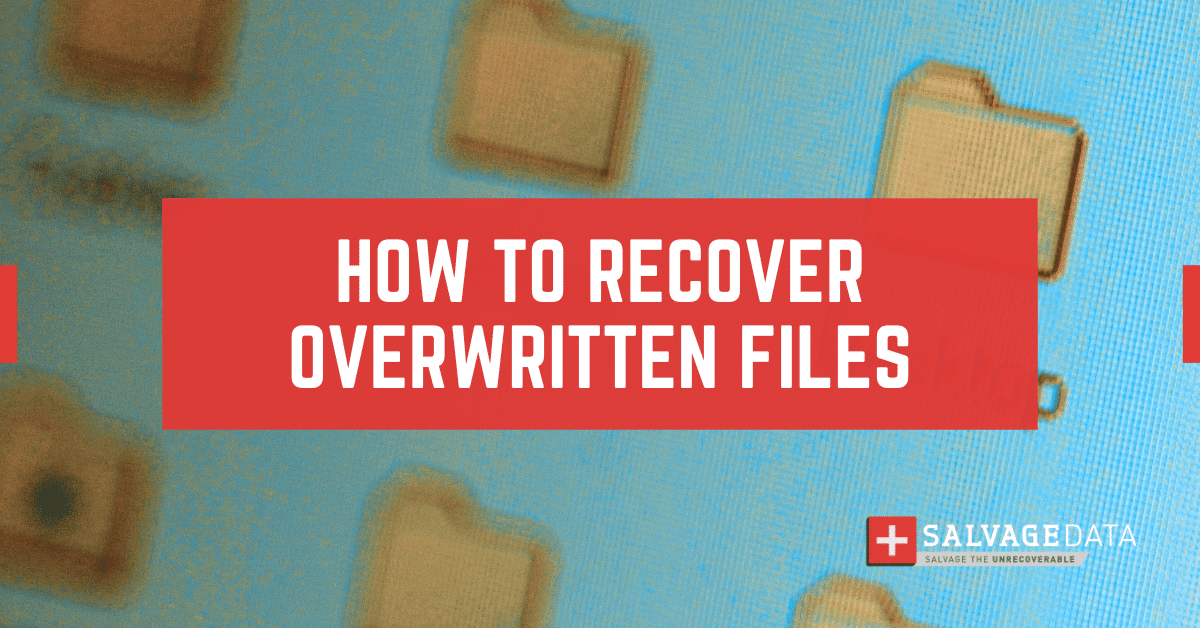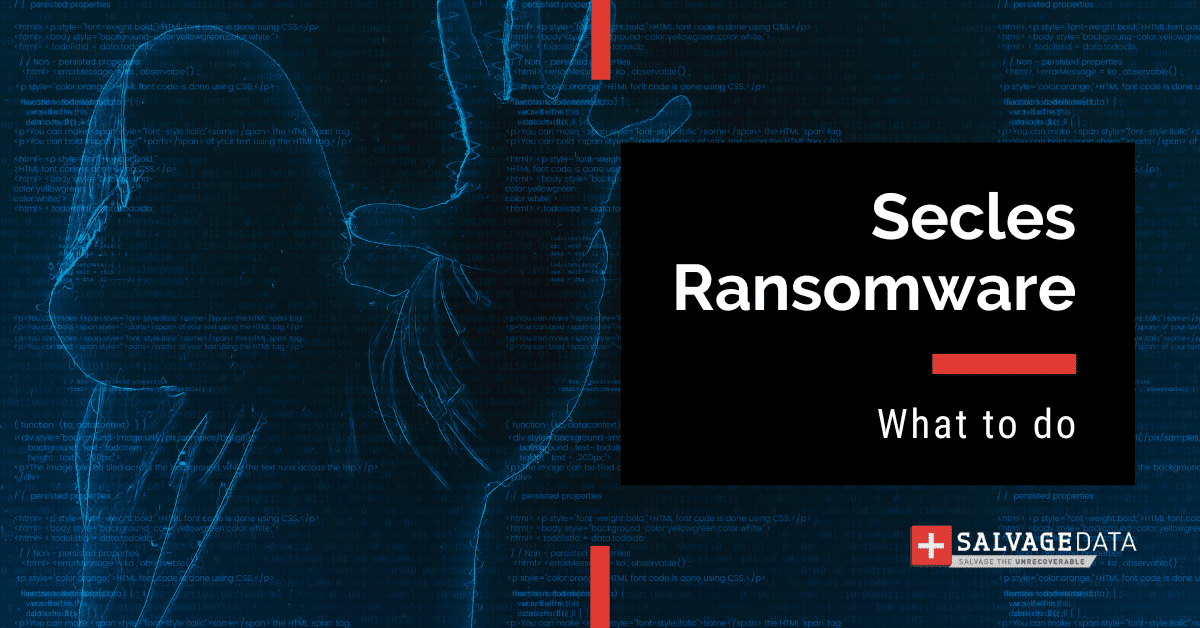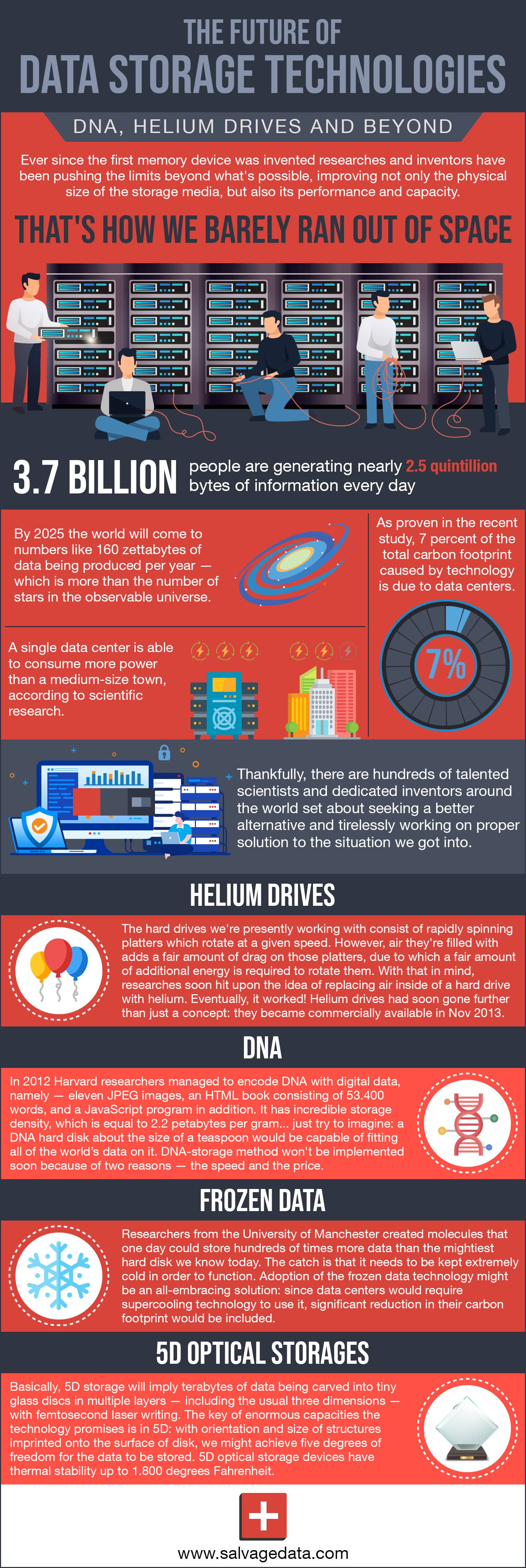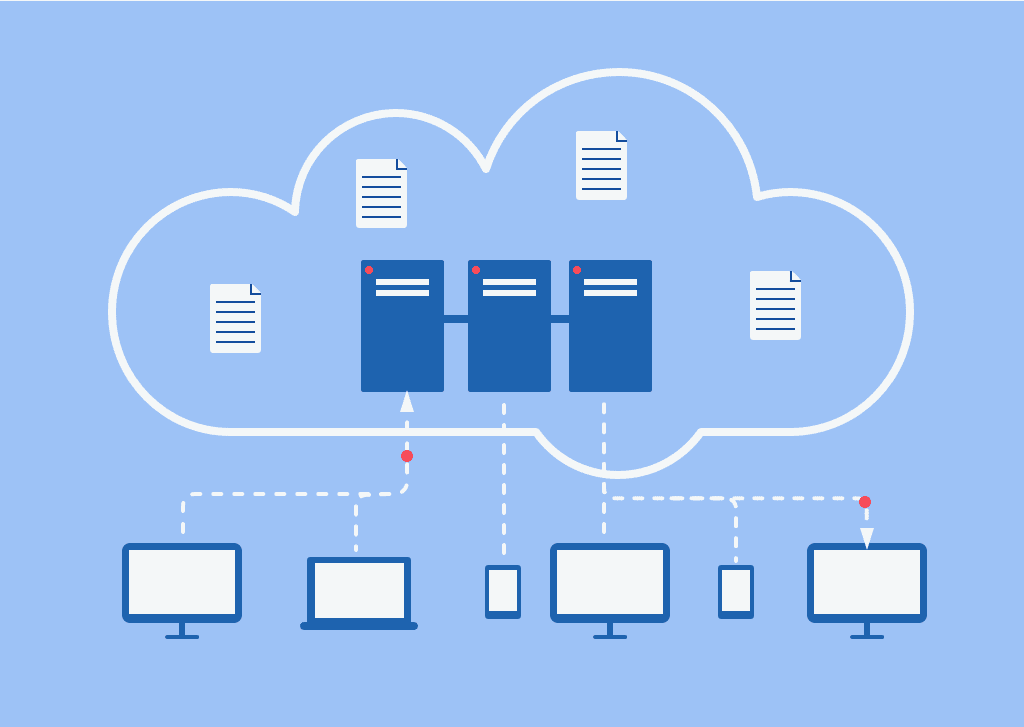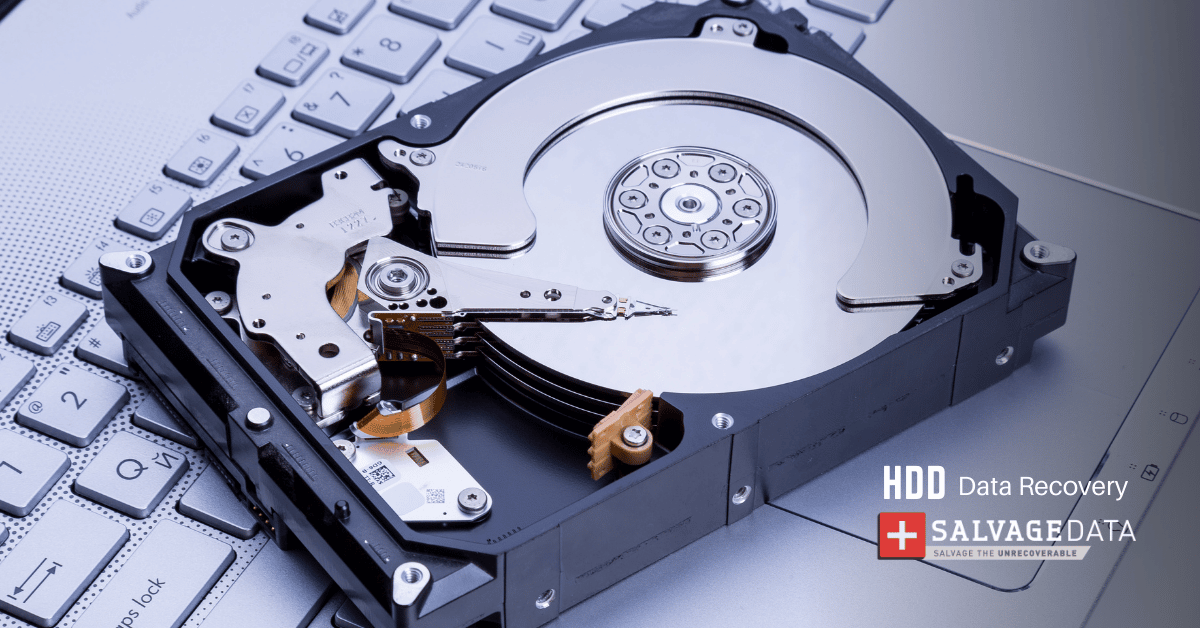Recent Articles
How To Recover Overwritten Files
The Snowflake Data Breach: A Comprehensive Overview
Mac Not Recognizing External Hard Drive: Quick Fix Solutions
How Multi-Cloud Backup Solutions Can Prevent Data Disasters
Capibara Ransomware: What is it & How to Remove
What Should a Company Do After a Data Breach: The Ticketmaster Incident
Secles Ransomware: Removal Guide
What To Do When Your Chromebook Freezes
How to Create Hyper-V Backup
What Is The Best Data Recovery Software For PC
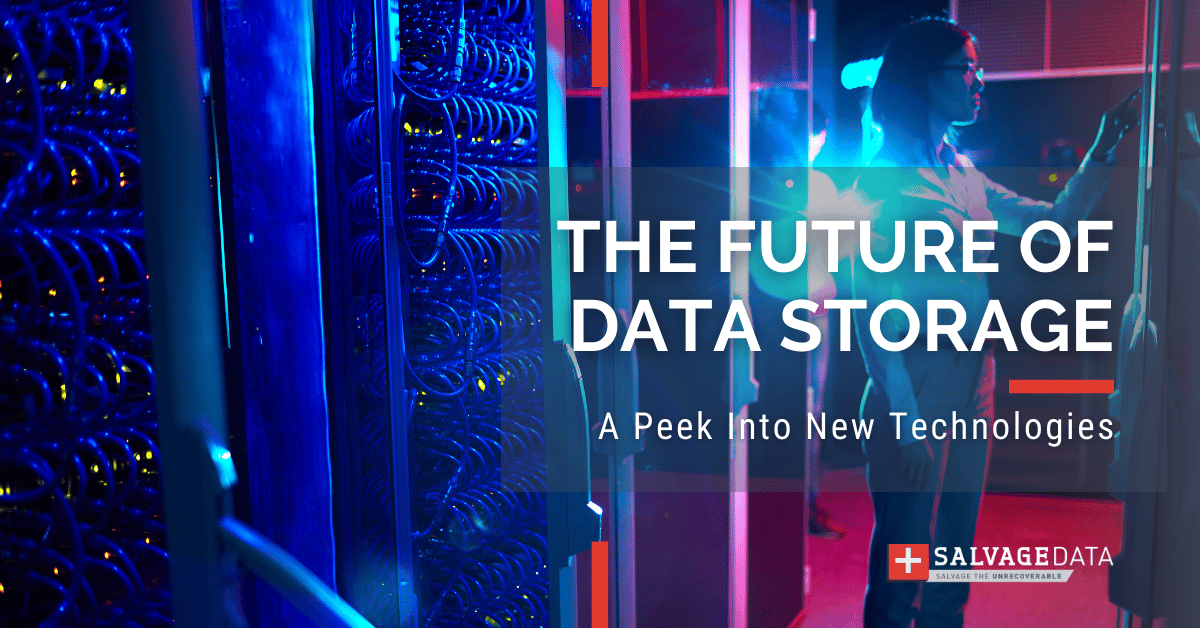
I think there's an issue with my storage device, but I'm not sure Start a free evaluation →
I need help getting my data back right now Call now (800) 972-3282
Since the first memory device was invented, researchers and inventors have been pushing the limits beyond what’s possible in terms of data storage. By updating old technologies or creating new ones, the future of data storage is on a path of improved cybersecurity and AI usage, with better user interfaces. All to make sure users can have access to their data at high speed and from anywhere they are.
New data protection requirements from the government, like HIPAA regulations and data privacy laws, can add significant costs to storage devices. And individuals also demand large storage space (from vacation photos to gaming data), and security for their personal information.
As a result, IT managers must adopt data storage technologies that allow them to reduce costs without compromising performance, security, or reliability.
What is the future of data technologies?
Here is a list of the most mind-boggling inventions and game-changing technologies. They have a brief overview of each, to shed some light on new technologies coming worldwide in the foreseeable future.
Artificial Intelligence (AI) in Data Storage
Applying AI in data storage involves the integration of Artificial Intelligence techniques for managing, optimizing, and automating various aspects of data storage. AI-driven solutions automate tasks such as backup scheduling, data classification, and storage resource optimization.
AI enables more efficient use of storage resources by dynamically adjusting configurations based on usage patterns.
It is possible to use AI in data storage to enhance data storage performance, improve disaster recovery processes, and assist in intelligent data management.
Helium Drives
The hard drives we’re presently working with consist of rapidly spinning platters that rotate at a given speed. However, the air inside is enough to drag the platters. This leads to a fair amount of additional energy required to rotate them.
Because of this, researchers found a way to replace the air inside a hard drive with helium. They assumed that using helium, since it’s lighter than air, should significantly reduce the resistance — and thereby the required amount of energy.
The most difficult part, however, was the fact helium tends to escape from everywhere. For this reason, it took years for the manufacturers to come up with a hard drive that not only could cope with refraining helium inside, but also function properly.
Helium drives became commercially available in November 2013, with the first helium-filled hard disk being introduced to the general public by HGST, a Western Digital subsidiary.
DNA Data Storage
How do you like the idea of keeping various kinds of data within a molecule that nature invented to store biological information? If you find it curious, yet way too unrealistic data storage technology at the same time — we agree.
Nonetheless, in 2012 Harvard researchers managed to encode DNA with digital data, namely eleven JPEG images, an HTML book consisting of 53.400 words, and a JavaScript program in addition.
The most intriguing feature of DNA storage is its incredible storage density, which is equal to 2.2 petabytes per gram.
A DNA hard disk about the size of a teaspoon would be capable of fitting all the world’s data on it.
The implementation and availability of the DNA storage technology won’t be soon, however. First, it takes an extremely long time to read and write DNA. Secondly, the technology is yet too expensive to be usable now: the cost is $3,500 per 1 megabyte, while hard drives cost under $0.10 per GB.
Crystal Technology
Crystal technology is an emerging data storage method that involves using lasers to encode data in microscopic structures within glass surfaces. Often referred to as 5D technology, it utilizes all five dimensions of quartz, enabling a significant amount of data storage.
The data is stored in minute glass structures, promising potential for high-density data storage. Crystal technology is still in its initial stages, and the exact commercial patterns and structures are yet to be fully established.
Frozen Data
Researchers from the University of Manchester created molecules that one day could store hundreds of times more data than the mightiest hard disk we know today. Even while refraining it in a materially smaller form factor. The catch is that it needs to be kept extremely cold to function.
This method, if works, will lead to a very useful technology called single-molecule magnets.
That’s because of their ability to remember the direction of an applied magnetic field over relatively long periods. All the while representing sizes many times smaller than existing magnetic materials we use to store information.
“Using single-molecule magnets, we could potentially make data storage media that is 100 times denser than current technologies such as HDDs and SSDs, which are facing their limitations for data density,” explains Dr. Nicholas Chilton, a senior lecturer, and Royal Society University Research Fellow in the Department of Chemistry at the University of Manchester.
Which, however, might be even more important, adoption of the frozen data storage technology might be an all-embracing solution. Since data centers would require supercooling technology to use, a significant reduction in their carbon footprint would be included.
5D Optical Data Storage
Another revolutionary data storage technology that is being elaborated by researchers at the U.K.’s University of Southampton, namely glass.
5D storage will imply terabytes of data being carved into tiny glass disks in multiple layers, with femtosecond laser writing.
The key to the enormous capacities the technology promises is in 5D. With the orientation and size of structures imprinted onto the surface of the disk, we might achieve freedom for the data to be stored.
The longevity of such a data storage solution is one of its most attractive features as a device for the future of data storage technologies. Especially when compared to vulnerable current data storage technologies, such as hard drives and magnetic tapes.
Shingled Magnetic Recording (SMR)
Shingled Magnetic Recording, or just SMR, is a new type of hard drive technology. It has great potential as a representative of the future of data storage technologies because of its large data storage capacity and reliability.
SMR is a data storage that will be in use soon since it’s a cost-friendly solution. Further, it needs no new materials to be manufactured, using existing parts to be produced. Meaning, it’s also an eco-friendly solution.
The need for new data storage solutions
Not long ago, fragile CDs/DVDs and floppy disks were considered an unprecedented technological breakthrough.
Today, we’re used to data storage devices with schemes that are smaller than a postage stamp. Just click on that “save” button, and watch the data whisking off straight into the cloud data storage.
Businesses and individuals have growing data to upload and store on storage devices and cloud accounts. Which increases the debate on where we’ll run out of storage space.
Another thing to be concerned about is the environmental factor. A recent study revealed that 7 percent of the total carbon footprint caused by technology is due to data centers. The same study indicates that a single data center can consume more power than a medium-sized town.
No wonder why scientists and inventors around the world are working on seeking better alternatives and building the future of data storage technologies.
What is data storage?
Computer data storage is any technology that records and retains digital data.
It’s possible to divide data storage technologies into magnetic, optical, or mechanical media. But regardless of form, data storage needs an actual device to retain data. Here, we can divide data storage devices into two categories: direct area storage and network-based storage.
Direct Area Storage
Also known as Direct-Attached Storage (DAS), this is the data storage category we are all familiar with. As its name suggests, it’s a data storage device that connects directly to the computer accessing it. Hard Disk Drives (HDD); Solid State Drives (SSD); Solid State Hybrid Drives (SSHD); Floppy Disks; Optic Compact Disks (CD); Digital Video Disks (DVD); Flash Drives, and USB Drives, among others, all fall within this category.
Network-Based Storage
Unlike DAS, Network-Based Storage allows more than one computer to access the data storage device through a network connection. It’s great for data sharing and collaboration needs. The most common setups are Network-Attached Storage (NAS) and Storage Area Networks (SAN). It can combine multiple types of devices for RAID arrays for example, and/or include cloud data storage.
Summary
Data storage solutions are divided into different media and devices that directly attach to a computer or are accessed through a network. Businesses and users can choose and tailor a data storage setup to meet their goals. They can select capacity, reliability, performance speed, costs, or even physical space needs.
There are several techniques commonly used by modern data storage technologies and they just keep evolving. These new data storage solutions are being designed to help businesses and individuals manage data growth. Besides meeting any compliance requirements while still reducing storage costs.
At the moment, we still are dealing with operational systems that sporadically greet us with Blue Screens of Death and hard drives that eventually crash.
So, in case some imperfect device of today has let you down and lost any of the important information it stored, contact SalvageData. Our team of dedicated, highly qualified technicians can get your vital data back safely and fast.

